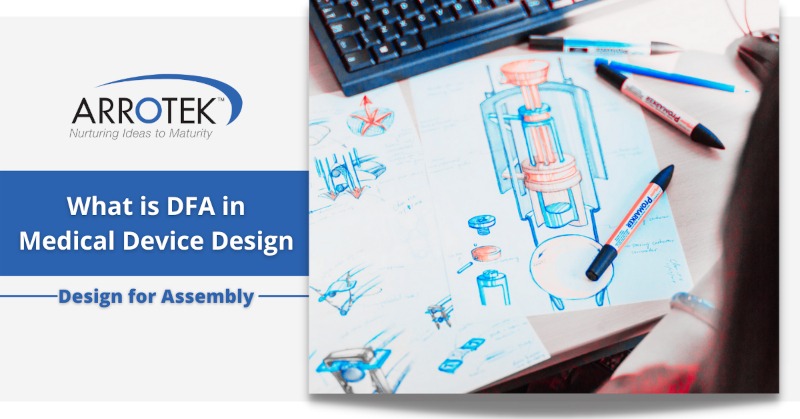
Design for assembly, or DFA, means designing a new medical device product so it can be assembled as easily as possible. It is a crucial part of the design process, particularly as the product moves to the pilot manufacturing, full manufacturing, and commercialisation stages.
DFA is a process that applies to medical device products with multiple components and is particularly important for complex devices. With the right DFA approach, assembly costs and timescales can be reduced to a minimum.
Essential DFA Considerations
Minimise the Components
One of the main objectives of DFA is to design the device with as few individual components as possible, as fewer individual components will make the device easier to assemble. It is especially important to minimise the number of fasteners while also simplifying those that can’t be eliminated.
Minimise Assembly Operations
Minimising the number of operations required to assemble the product makes the process more efficient and saves time. This includes minimising how often the components need to be reorientated during assembly. Reorientation is an operation, but it is a preparation step rather than an actual assembly step. It can often be removed by making the next step possible without the need for reorientation.
A good example of this comes from outside the medical device industry, but the principles are the same. When Sony was designing the Walkman, it applied a vertical assembly approach. This meant all the components could be assembled using a straight-down motion, largely eliminating the need for reorientation, and minimising the number of assembly operations.
Make the Components Easy to Handle
Components that are difficult to work with will slow down the assembly process and increase the potential for mistakes. Therefore, the components of your new medical device product should be as easy as possible to hold, move, insert, and fasten during assembly.
Make the Process Straightforward
The overall assembly process is important, too, as it should be as straightforward as possible. The main objective of this DFA consideration is to reduce the opportunities for failure. This is known as mistake-proofing or poka-yoke. Poka-yoke is a Japanese term that means preventing inadvertent errors.
Examples of poka-yoke include designing self-aligning components and components that fit regardless of their orientation.
Don’t Forget the Packaging
DFA is not just about the device itself, but also the packaging. Optimising the part packaging plays in the assembly process is important too.
Where Does DFA Fit in the Medical Device Design Process?
In decades gone by, designers would create a product with little regard to manufacturing or assembly. Once it was designed, they would pass the project over to the manufacturing team who would figure out how to produce it and get it into the customer’s or user’s hands.
Today, however, multiple elements of the design process take place concurrently. Therefore, DFA starts in the earliest stages and remains part of the process throughout.
DFA vs DFM
DFA and DFM are sometimes mashed together, but they are distinct processes. DFM stands for design for manufacture and is about optimising the product for manufacturing. In particular, it involves minimising manufacturing costs.
DFA looks at the next stage in the process, i.e., the assembly of the product after the various components have been manufactured.
You may also come across a third acronym – DFMA. It means Design for Manufacture and Assembly.
Design for Automated Assembly
With the increasing use of automation in the manufacture and assembly of medical device products, design for automated assembly is becoming increasingly important. Design for automated assembly involves all the essential DFA considerations mentioned above, in addition to considering the capabilities and limitations of robots.
Benefits of DFA
- Faster to assemble final product
- Reduced material costs
- Optimised manufacturing and assembly costs
- Improved assembly process reliability
- Enhanced product quality
- Fewer mistakes
- Improved productivity
End-to-End Approach
When designing a new medical device product, it is important to take a wide-angle view, looking at the product’s full lifecycle. DFA is an important aspect of this approach as it helps ensure you have a product that not only performs as intended but is also commercially viable.

